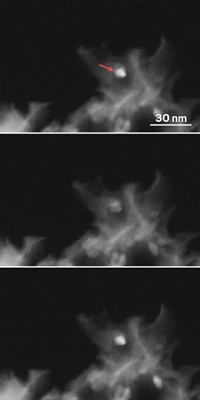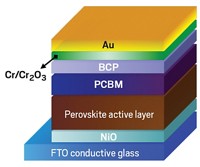Advertisement
Grab your lab coat. Let's get started
Welcome!
Welcome!
Create an account below to get 6 C&EN articles per month, receive newsletters and more - all free.
It seems this is your first time logging in online. Please enter the following information to continue.
As an ACS member you automatically get access to this site. All we need is few more details to create your reading experience.
Not you? Sign in with a different account.
Not you? Sign in with a different account.
ERROR 1
ERROR 1
ERROR 2
ERROR 2
ERROR 2
ERROR 2
ERROR 2
Password and Confirm password must match.
If you have an ACS member number, please enter it here so we can link this account to your membership. (optional)
ERROR 2
ACS values your privacy. By submitting your information, you are gaining access to C&EN and subscribing to our weekly newsletter. We use the information you provide to make your reading experience better, and we will never sell your data to third party members.
Materials
Hollow Titania Fibers Improve Solar Cells
TiO2 fibers made on a cotton template outperform TiO2 particles in photovoltaic device tests
by Mitch Jacoby
May 17, 2010
| A version of this story appeared in
Volume 88, Issue 20

Electrodes made from hollow titanium dioxide fibers outperform ones made from solid spherical TiO2 particles in photovoltaic device tests, according to a study by researchers in Switzerland and Iran (Nano Lett. 2010, 10, 1632). Dye-sensitized solar cells (DSCs) typically incorporate a photoanode fabricated from a film of interconnected, porous, spherical TiO2 nanoparticles that are coated with dye molecules. DSCs are widely studied as alternatives to costly but better performing silicon-based photovoltaics. To boost DSC performance while keeping costs low, Nima Taghavinia of Sharif University of Technology, in Tehran; Jacques-E. Moser of the Swiss Federal Institute of Technology, Lausanne; and coworkers developed a method for synthesizing TiO2 as elongated hollow fibers by using inexpensive cotton fibers as a template. Compared with conventional spherical particles, the fiber morphology is expected to enhance the efficiency of charge transport and collection and improve light harvesting. These predictions are borne out by device tests, the team says. The researchers report that the electron transport rate doubled and the electron lifetime before charge-robbing neutralization occurs increased by a factor of up to four in the new DSCs relative to DSCs made with conventional TiO2 films.




Join the conversation
Contact the reporter
Submit a Letter to the Editor for publication
Engage with us on Twitter